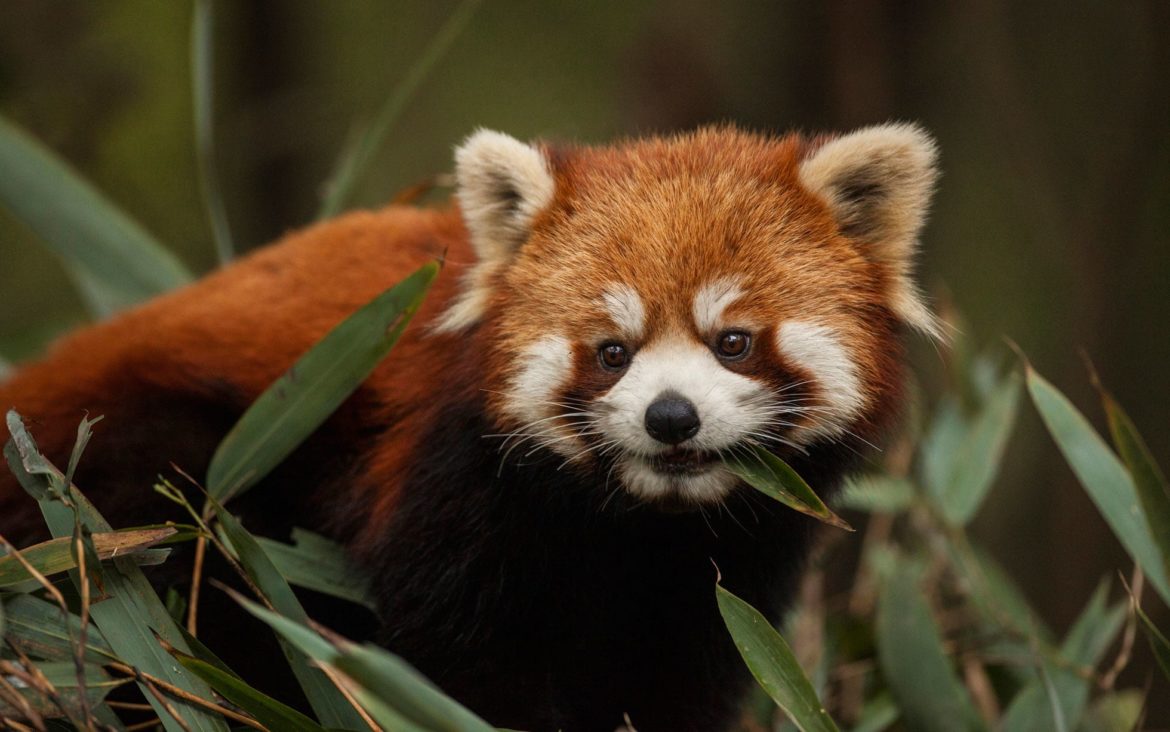UK's Rarest Wildlife: A Burning Issue – The Threat Of Wildfires

Table of Contents
Vulnerable Habitats and Species Affected by Wildfires
Wildfires in the UK disproportionately affect specific habitats, leading to significant biodiversity loss. Heathland fires, for example, devastate the delicate ecosystems that support rare species like the Dartford Warbler, a UK endangered bird, and the smooth snake, a reptile whose habitat is critically threatened. Peatland fires, particularly damaging due to the slow regeneration of peat, impact a wide range of species, including the elusive water vole, a UK endangered mammal. Ancient woodlands, with their rich biodiversity and slow-growing trees, are equally vulnerable, leading to habitat loss for various species, including the pine marten and numerous insects.
- Loss of nesting sites for rare birds: The Dartford Warbler, Nightjar, and other species rely on specific vegetation structures for nesting, easily destroyed by fire.
- Destruction of crucial foraging grounds for mammals: Wildfires eliminate the vital food sources for mammals such as the pine marten, water vole, and others, impacting their survival and breeding success.
- Degradation of reptile and amphibian breeding habitats: The heat and destruction from wildfires render breeding sites unsuitable for species such as the smooth snake and natterjack toad, leading to population decline.
- Increased risk of predation due to habitat fragmentation: Wildfires create fragmented habitats, making it easier for predators to access vulnerable species and disrupting natural predator-prey balances.
The Link Between Climate Change and Increased Wildfire Risk
The increasing frequency and intensity of wildfires in the UK are inextricably linked to climate change. Rising temperatures and prolonged droughts, hallmarks of a changing climate, create ideal conditions for wildfires to ignite and spread rapidly. Drier vegetation becomes highly flammable, while changing wind patterns can influence fire behaviour, making them more unpredictable and devastating. This creates a vicious cycle, where wildfires exacerbate the effects of climate change by releasing significant amounts of carbon dioxide into the atmosphere.
- Drier vegetation leading to easier ignition and faster spread of fires: Extended periods of dry weather turn vegetation into tinder, increasing the risk of wildfires and accelerating their spread.
- More frequent heatwaves creating ideal conditions for wildfires: Increased heat intensifies the risk, creating tinder-dry conditions and increasing the likelihood of accidental ignitions.
- Changes in wind patterns influencing fire behaviour: Unpredictable wind shifts can cause fires to spread rapidly and uncontrollably, increasing the area of destruction.
Conservation Efforts and Mitigation Strategies
Protecting the UK's rarest wildlife from wildfires requires a comprehensive approach combining conservation efforts, improved fire management, and robust prevention strategies. Habitat restoration projects are crucial, focusing on replanting fire-resistant species and creating firebreaks to limit the spread of flames. Improved fire management techniques, such as controlled burns under specific conditions, can reduce the fuel load and prevent larger, more destructive wildfires. Early warning systems using advanced technology are also essential to provide timely alerts and facilitate rapid response.
- Habitat restoration projects focusing on fire-resistant species: Replanting areas with fire-tolerant vegetation helps to create more resilient ecosystems.
- Improved fire management techniques and early warning systems: Controlled burning, alongside advanced monitoring and alert systems, can limit the devastating impact of wildfires.
- Community engagement in wildfire prevention and response: Involving local communities in wildfire prevention and response efforts is key to effective management and rapid response.
- Government initiatives and funding for conservation programs: Adequate funding and policy support are essential for the success of conservation efforts.
The Role of Public Awareness and Individual Actions
Public awareness plays a vital role in wildfire prevention. Simple actions by individuals can significantly reduce the risk of accidental fires. Responsible disposal of cigarettes and campfires is paramount, as is avoiding activities that could spark a fire, especially in dry conditions. Prompt reporting of any suspected wildfire to the emergency services is also crucial to enable a swift response and limit the damage.
- Responsible disposal of cigarettes and campfires: Ensure cigarettes are fully extinguished and campfires are completely out before leaving the area.
- Avoiding activities that could spark a fire (e.g., using barbecues in dry conditions): Exercise caution with any activity that could potentially ignite dry vegetation.
- Reporting any suspected wildfires immediately: Quick reporting is crucial for minimizing damage and protecting wildlife.
Conclusion
The devastating impact of wildfires on the UK's rarest wildlife is a pressing issue demanding immediate and concerted action. The intricate relationship between climate change, vulnerable habitats, and endangered species necessitates a multi-pronged approach incorporating conservation efforts, improved fire management, and increased public awareness. By understanding the threat and actively participating in prevention and mitigation strategies, we can collectively safeguard the UK's precious biodiversity and protect its rarest wildlife from the burning issue of wildfires. Let's work together to prevent the loss of our most precious natural heritage; learn more about protecting the UK's rarest wildlife and preventing wildfires today.

Featured Posts
-
 Inside Our Adhd Minds Challenges Strengths And Strategies
May 13, 2025
Inside Our Adhd Minds Challenges Strengths And Strategies
May 13, 2025 -
 Hl Tjawz Lywnardw Dy Kabryw Hdwd Qaedt Emr Sdyqath
May 13, 2025
Hl Tjawz Lywnardw Dy Kabryw Hdwd Qaedt Emr Sdyqath
May 13, 2025 -
 The Rise Of Post Quantum Cryptography Market Projections And Technological Advancements
May 13, 2025
The Rise Of Post Quantum Cryptography Market Projections And Technological Advancements
May 13, 2025 -
 Brexit Fallout Spanish Border Towns Brace For Economic Disaster
May 13, 2025
Brexit Fallout Spanish Border Towns Brace For Economic Disaster
May 13, 2025 -
 Efl Highlights Key Moments And Match Reports
May 13, 2025
Efl Highlights Key Moments And Match Reports
May 13, 2025
